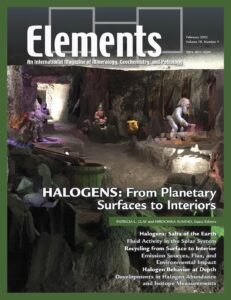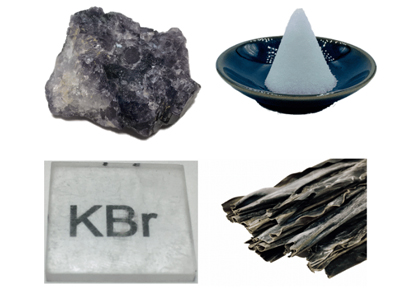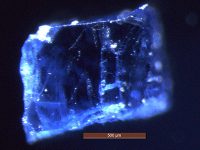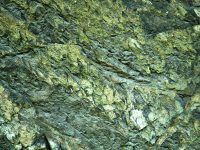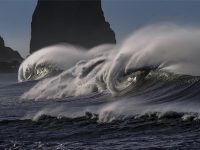Halogens: From Planetary Surfaces to Interiors
Patricia L. Clay and Hirochika Sumino – Guest Editors
Table of Contents
The halogen-group elements (F, Cl, Br, and I) are common in the terrestrial inventory, though often present in trace amounts in many Earth and planetary materials. The halogens play a key role in a variety of geologic environments and processes, from mineralization to their influence on the composition of Earth’s atmosphere when released as oceanic, volcanogenic, and anthropogenic emissions. Halogens act as “fingerprints” of fluidmediated processes on Earth and other planetary bodies. These “bioessential” elements are also critically important to human health. In this issue of Elements, we explore the role that the halogens play in shaping diverse planetary systems, from the surface of planets to their interiors. We also review the techniques that are suitable for the analysis of halogen elements and of isotopes of Cl and Br in terrestrial and extraterrestrial materials.
- Halogens: Salts of the Earth
- A Halogen Record of Fluid Activity in the Solar System
- Sediments, Serpentinites, and Subduction: Halogen Recycling from the Surface to the Deep Earth
- Natural Halogen Emissions to the Atmosphere: Sources, Flux, and Environmental Impact
- Experimental and Observational Constraints on Halogen Behavior at Depth
- Developments in Halogen Abundance and Isotope Measurements
v18n2 Organic Biomarkers
GUEST EDITORS: Sebastian Naeher (GNS Science, New Zealand), Xingqian Cui (Shanghai Jiao Tong University, China), and Roger E. Summons (Massachusetts Institute of Technology, USA)
Biomarkers are molecular fossils that are preserved in a wide range of environmental archives (e.g., soils, sediments, sedimentary rocks, and petroleum systems). This issue introduces biomarkers and their compoundspecific stable isotope compositions to study fundamental biogeochemical processes and their application as proxies for environmental and climate reconstructions. Molecular biosignatures can be used to study the evolution of life, transitions in ocean plankton over time, the microbiota of extreme environments such as hydrothermal systems and the deep crustal biosphere, and to search for signs of life beyond Earth. Important new discoveries are typically the result of the development and deployment of improved instrumental techniques, multidisciplinary research approaches, and the combination of organic biogeochemistry with the new tools of molecular biology.
- Biomarkers: Molecular Tools to Study Life, Environment, and Climate Sebastian Naeher (GNS Science, New Zealand), Xingqian Cui (Shanghai Jiao Tong University, China), and Roger E. Summons (Massachusetts Institute of Technology, USA)
- Contributions of Genomics to Lipid Biomarker Research: From Paleoclimatology to Evolution Laura Villanueva (NIOZ – Royal Netherlands Institute for Sea Research and Utrecht University, The Netherlands) and Marco J.L. Coolen (Curtin University, Australia)
- Biomarkers in the Precambrian: Earth’s Ancient Sedimentary Record Christian Hallmann (GFZ German Research Centre for Geosciences, Germany), Katherine L. French (United States Geological Survey, USA), and Jochen J. Brocks (Australian National University, Australia)
- Biomarkers in Extreme Environments on Earth and the Search for Extraterrestrial Life in Our Solar System Florence Schubotz (University of Bremen, Germany), Mark A. Sephton (Imperial College London, UK), and Sylvie Derenne (Sorbonne University and CNRS, France)
- Advancing Analytical Frontiers in Molecular Organic Biomarker Research Through Spatial and Mass Resolution Amy M. McKenna (Florida State University, USA), Paul D. Zander (University of Bern, Switzerland), and Lars Wörmer (University of Bremen, Germany)
- Future Outlook for Applications of Biomarkers and Isotopes in Organic Geochemistry John K. Volkman (CSIRO, Australia)
- Halogens: From Planetary Surfaces to Interiors (February 2022)
- Organic Biomarkers (April 2022)
- Water in Planetary Bodies (June 2022)
- Cascadia Suduction Zone (August 2022)
- Cement and Concrete: From the Romans to Mars (October 2022)
- Exploring Jupiter’s Moon Io (December 2022)



